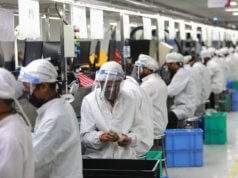 The outlook for the Indian construction, mining and earthmoving equipment industry is encouraging for the next several years.
The outlook for the Indian construction, mining and earthmoving equipment industry is encouraging for the next several years.
The Planning Commission says the proposed investment of over $1 trillion and increasing urbanisation during the 12th Five-Year Plan (2012-2017) will have a positive impact on the construction sector, which is expected to grow at a compound annual growth rate of 16-17 per cent over the next one decade. This in turn will drive growth in the equipment sector.
Today, construction in India accounts for 60-80 per cent of the cost of projects, especially road and housing, and a sizeable portion in other infrastructure sectors. On the other hand, construction equipment accounts for slightly over 20 per cent of the total project cost though the price of equipment can vary depending on the product bought and used.
Off-Highway Research, a management consultancy specialising in research and analysis of international construction and agricultural equipment markets, estimates the sale of construction equipment to reach 84,000 units by 2014, of which infrastructure and real estate sectors will account for 70 per cent of sales. This would translate into a compound annual growth rate of about 20 per cent until next year.
However, not everybody predicts robust growth for the mining and construction equipment industry. For instance, ICRA Ltd feels that the near-term outlook for the sector will be “subdued” with demand for equipment remaining “sluggish” owing to the “slow pace of infrastructure investment, weak business confidence and continued regulatory issues surrounding mining activities.”
In fact, the investment information and credit rating agency does not expect a significant turnaround even if construction and mining activities pick up because of the high levels of idle inventory in the market. Therefore, ICRA expects the MCE industry to clock a volume de-growth of around 12-15 per cent during the current fiscal to around 60,000-63,000 units.
|
PROJECT OPPORTUNITIES FOR CE SECTOR
|
|||
| Sectors | Projects | ` Crore | |
| Airways (aviation infrastructure) | 135 | 61,441 | |
| Cement & Asbestos | 286 | 118,292 | |
| Commercial Complexes | 1,751 | 40,901 | |
| Hospitals | 885 | 40,748 | |
| Hotels & Restaurants | 429 | 16,994 | |
| Industrial & Software Parks | 740 | 222,664 | |
| Iron & Steel | 654 | 556,017 | |
| Mining | 906 | 160,403 | |
| Oil & Gas Pipelines | 89 | 39,499 | |
| Petroleum Products (Refinery) | 71 | 341,747 | |
| Railways | 793 | 502,622 | |
| Roadways | 15,615 | 734,796 | |
| Shipping Infrastructure | 315 | 158,584 | |
| Storage (LNG & LPG) | 485 | 52,314 | |
| Thermal-based power | 691 | 1,984,231 | |
| Tourism & Recreation | 893 | 35,129 | |
| Wind-based Power | 96 | 13,992 | |
| Total | 24,834 | 5,080,374 | |
| Source: www.projectstoday.com | |||
| * Data as of March 30, 2013 | |||
Since the turn of the century, there has been a significant improvement in the Indian construction, mining and earthmoving equipment industry in terms of equipment manufactured and its productivity, safety and accuracy. The emergence of foreign construction equipment manufacturers, including Chinese companies, in India, has forced domestic players to embrace advanced technology that meet global standards. While this is ensuring better efficiency, it is also reducing the need for skilled labour. A Planning Commission estimate places domestic content in standard equipment at nearly 35 per cent and in high-technology at around 78 per cent.
Competition among key domestic and foreign players is set to intensify in coming years, especially since already three Chinese companies are believed to enjoy a 12 per cent share of the Indian market. The Chinese players also have vastly improved distribution and after-sales networks.
Indian construction, mining and earthmoving equipment manufacturers are aware of the challenges facing their sector. Highlighting some of these, a CII report emphasised the need to rationalise taxes to remove impediments in the interstate movement of equipment, bridging skills gaps, prohibiting unregulated import of used equipment, and removal of ambiguity over emission and safety standards.
Other impediments in the growth of this sector include high operation, maintenance and financial costs; inadequate access to institutional finance, especially for small contractors who execute over 90 per cent of construction work; lack of funds for modernisation and expansion of equipment facilities; losses on account of idling equipment and its maintenance; lack of special incentives or schemes to finance the import of hi-tech construction equipment for infrastructure projects; absence of 100 per cent depreciation on construction equipment, particularly for affordable housing sector; non-reduction of excise duty on equipment manufacturing; and inadequate development of skills.
Notwithstanding the shortcomings, the construction, mining and earthmoving equipment sector remains occupied with certain ongoing projects in the infrastructure sector, particularly road construction (NHAI), metro rail in various cities, and power and airports. Equipment also has demand from government-backed projects in the rural sector.
However, “medium-term growth will be pivotal on successful implementation of the 12th Five-Year Plan which underlines the demand for quality infrastructure. Overall, while the industry is likely to return to growth of 7-8 per cent over the medium term (15-18 months), the 30 per cent plus growth of the last decade is unlikely anytime soon,” ICRA noted.










